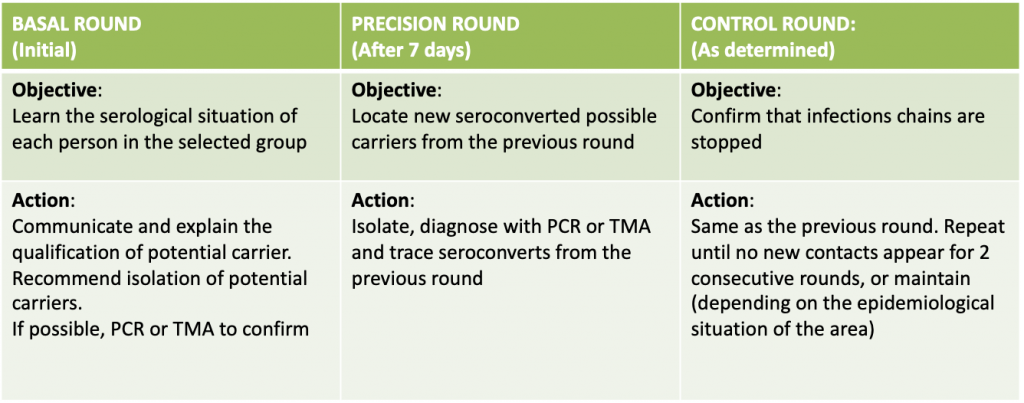Seroscreening
Methodology
Baseline round
In the first round, the individuals with early antibodies (IgM+), regardless of whether they have symptoms, are considered possible carriers despite the fact that most of them will have already gotten over the disease. The best option in this case for breaking the chains of transmission of the disease by asymptomatics is to recommend their confinement and to try to confirm the diagnosis. When the IgM disappear, the IgG+ indicate that the individuals are recovering or have already recovered from the disease.

Precision round
The people in the first round who didn’t show any antibodies are either not infected or have been infected recently, in the last ten days. In order to find these possible cases, it’s essential to perform a second seroscreening a week after the first. In the second test, the vast majority of the infected individuals who showed no antibodies in the first round will have developed them and will be identified so that they can be isolated.
As a consequence, in this round all of the IgM+ individuals who had negative results in the first round will be evaluated, treated and confined for the period stipulated by the health authorities, thereby breaking the chains of transmission.
Control round
To ensure that there are no remaining cases, Linkcare recommends completing a control round one week after the precision round. If there are no new positive cases, we can be sure there has been no further transmission. If there are any new cases, these should be treated as in the previous round, and an additional round should be repeated the following week.
